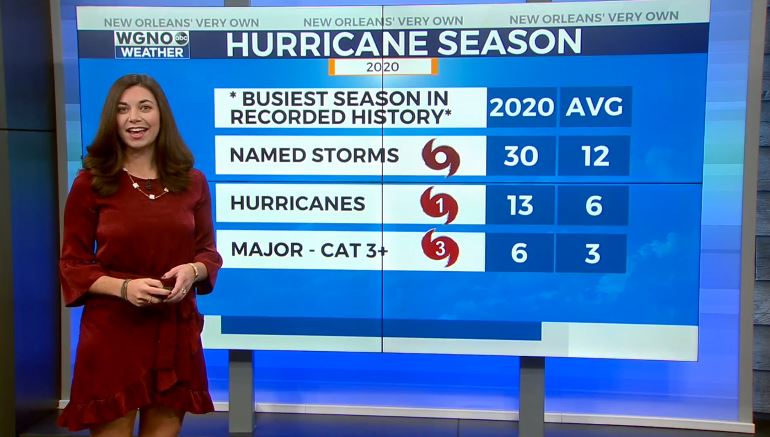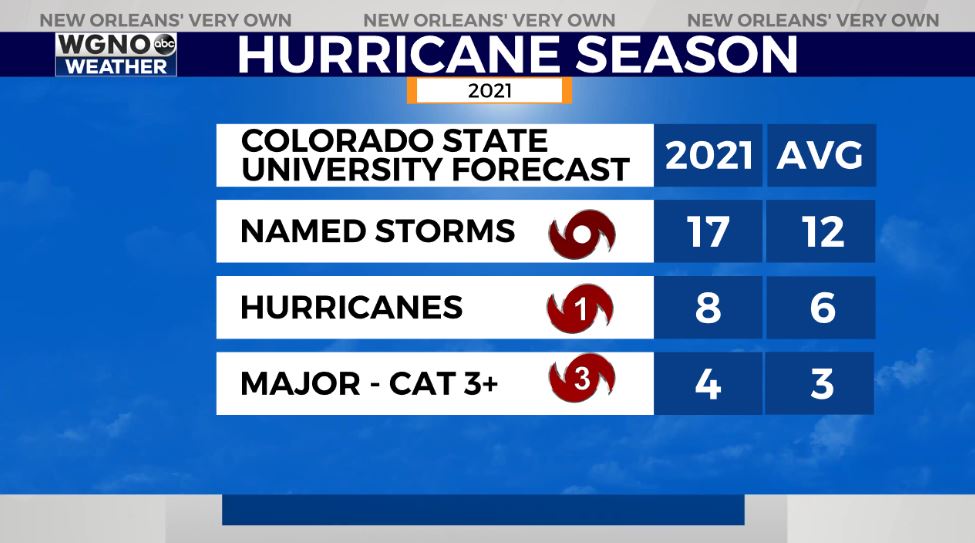Early on, NOAA’s forecast for August-November being “extremely active” months came to fruition, given every name on the 2020 Atlantic Names List was used before October.

2020’s hurricane season produced thirty tropical depressions, twenty-nine of which became tropical storms. In addition, there were thirteen hurricanes, six of which became major hurricanes.
Previously, NOAA’s Climate Prediction Center Atlantic storm averages were based on the thirty year period of 1981-2010. These included twelve named storms, six hurricanes, and three major hurricanes.
Now, in 2021, NOAA’s CPC will use a new thirty year period of 1991-2021 as its record timeframe when determining averages. The updated numbers are a bit higher given last year’s season statistics factoring in.

These have increased to include fourteen named storms and seven hurricanes. The three major hurricanes average, however, will remain unchanged. Remember, a major hurricane is described as a Category 3 or higher storm.

Colorado State University’s forecast calls for an above-average hurricane season as well in 2021 with seventeen named storms, eight hurricanes, and four major hurricanes. The season officially begins June 1, 2021 and runs through November 30, 2021.
Check out current conditions near you: https://digital-stage.wgno.com/weather/new-orleans-weather-radar/
Stay up to date with the latest forecast: digital-stage.wgno.com/weather/forecast/
Download the WGNO Weather App to stay connected this hurricane season



























